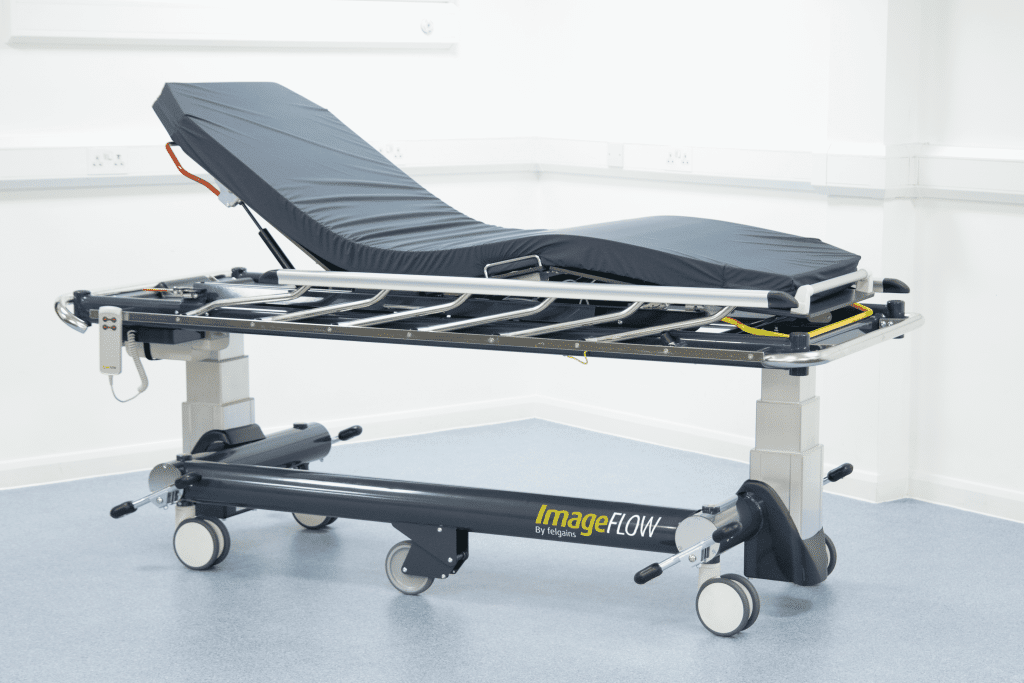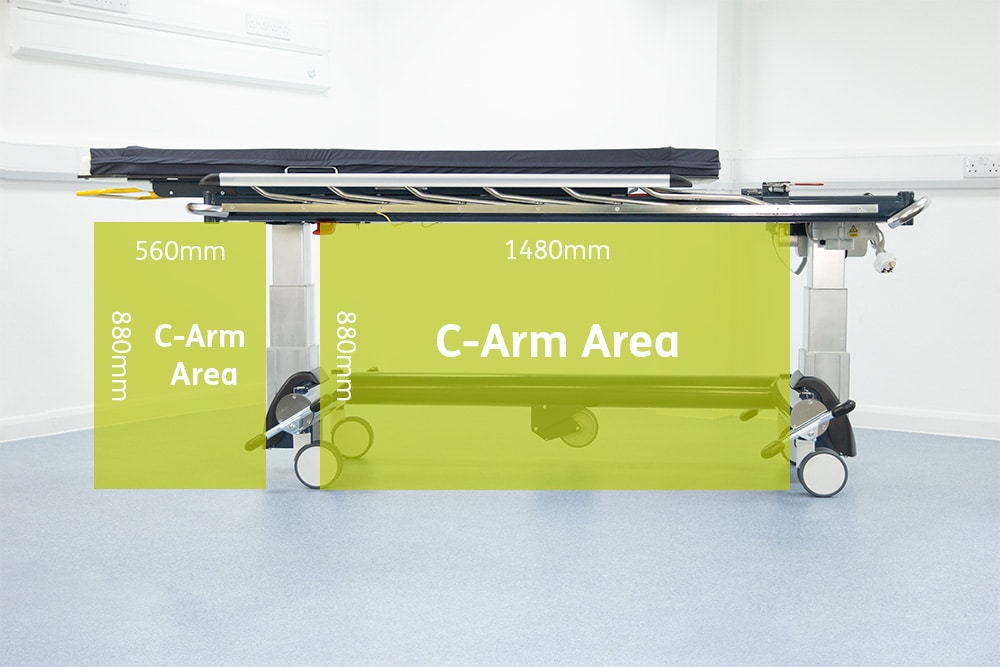Using a Fluoroscopy Stretcher vs a standard Patient Stretcher for fluoroscopy procedures; a comparison
A question we’re often asked when discussing the ImageFlow Fluoroscopy stretcher with hospitals, is ‘What are the benefits of using a fluoroscopy stretcher for procedures, over just using a normal patient stretcher?’
In this article, we will go over the numerous benefits of using a specialised fluoroscopy stretcher for fluoroscopy procedures, to enable you to make the best decision for your hospital and patients.

What is Fluoroscopy?
Fluoroscopy is a specialised imaging technique that employs a continuous X-ray beam to capture moving images of the body in real time.
Unlike traditional X-rays that produce static images, fluoroscopy enables healthcare professionals to observe internal organs, systems, and medical procedures as they unfold.
The name “fluoroscopy” originates from the fluorescent screen used to visualise X-ray images.
What is a fluoroscopy stretcher?
A fluoroscopy stretcher, sometimes known as a C-arm stretcher or imaging stretcher, is specifically designed to facilitate fluoroscopy procedures.
Fluoroscopy stretchers have a number of features and functions that give them an advantage over patient stretchers when used for fluoroscopy procedures, which we will cover in detail below.
What are the benefits of using a specialised fluoroscopy stretcher for fluoroscopy procedures?
Fluoroscopy stretchers offer lots of benefits over standard patient stretchers for fluoroscopy procedures. They can help to improve patient comfort and safety, provide a wider range of patient positioning options, improve image quality, reduce radiation exposure, and increase efficiency.
Fluoroscopy stretchers typically have radiolucent tops made of carbon fiber or composite material that allows X-rays to pass through it. This allows for higher-quality images versus a standard metal-framed stretcher, and also enables the radiographer to use less radiation to get a clear image, reducing the level of radiation the patient is exposed to.
Some fluoroscopy stretchers, like the ImageFlow, are designed with specialised U-shaped bases, which result in a large amount of clearance for the C-arm camera to be positioned very closely to the table, improving image quality and allowing the staff to achieve the exact images needed.

A number of fluoroscopy stretchers also have controls that allow the table to be precisely positioned in different directions. For example, the Felgains ImageFlow stretcher has a mattress platform that slides longitudinally. This allows the imaging to quickly and easily position the patient to achieve the exact images needed during the procedure.
Related article: How does the Felgains ImageFlow sliding platform work?
Finally, using a fluoroscopy stretcher improves efficiency in your imaging department. By using a stretcher like the ImageFlow, the need for staff to transfer the patient in the imaging department is completely removed, as the patient can stay on the stretcher during the procedure, as well as for transportation to and from a ward or unit.
This improves the speed at which patients flow through your imaging departments, ultimately reducing wait times and improving patient flow through your hospital.
Related articles
How much do Imaging and Fluoroscopy stretchers cost to buy?
The 5 best Fluoroscopy and Imaging stretchers in 2023 – a complete comparison
Fluoroscopy: What it is, what it’s used for, & its benefits
Get in touch
Got a question or want to send us a message? Let’s talk.